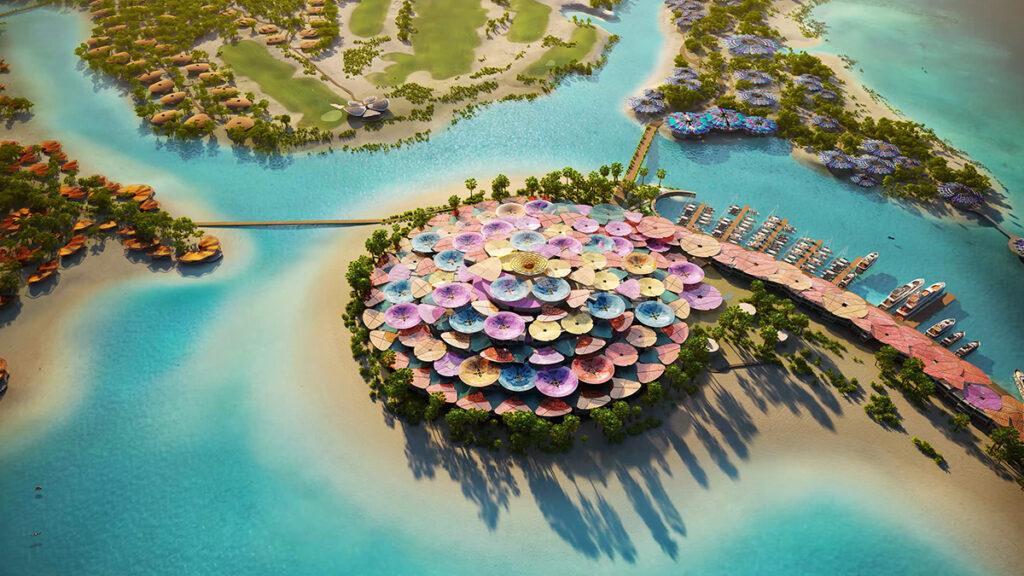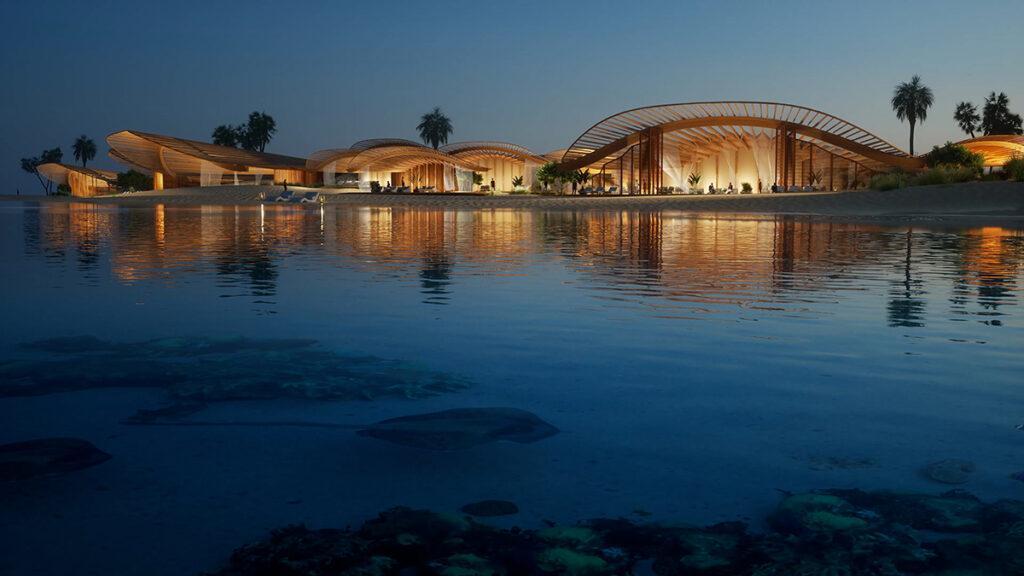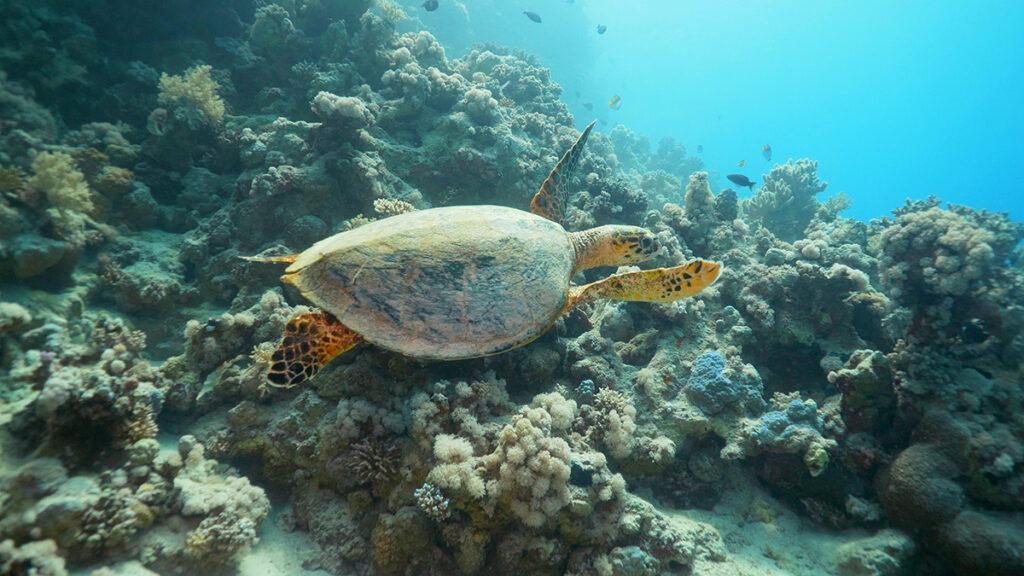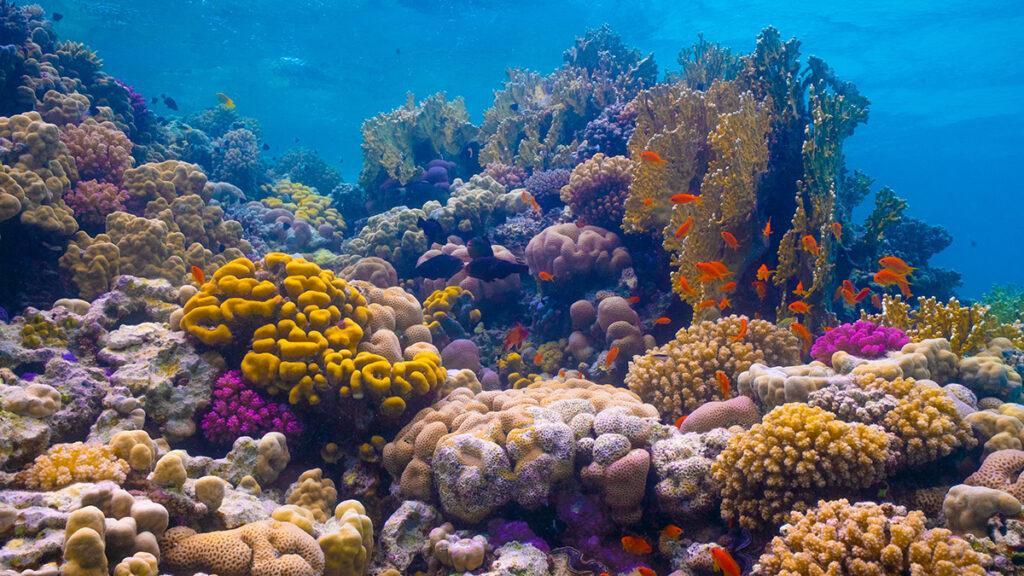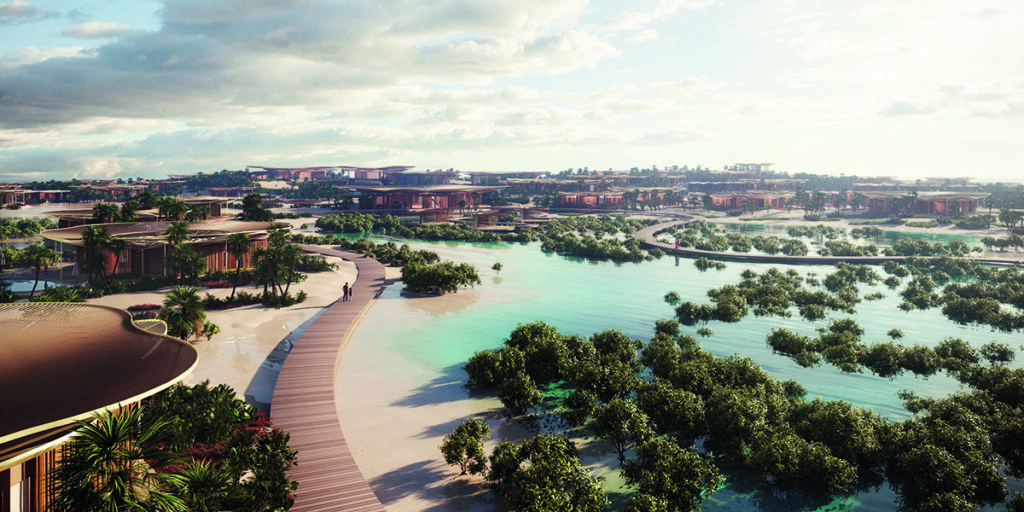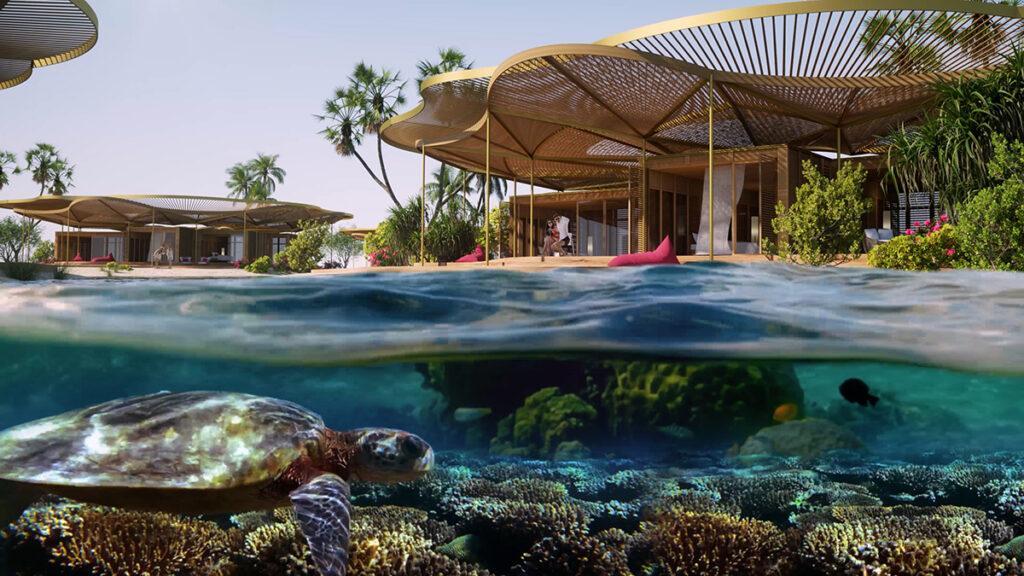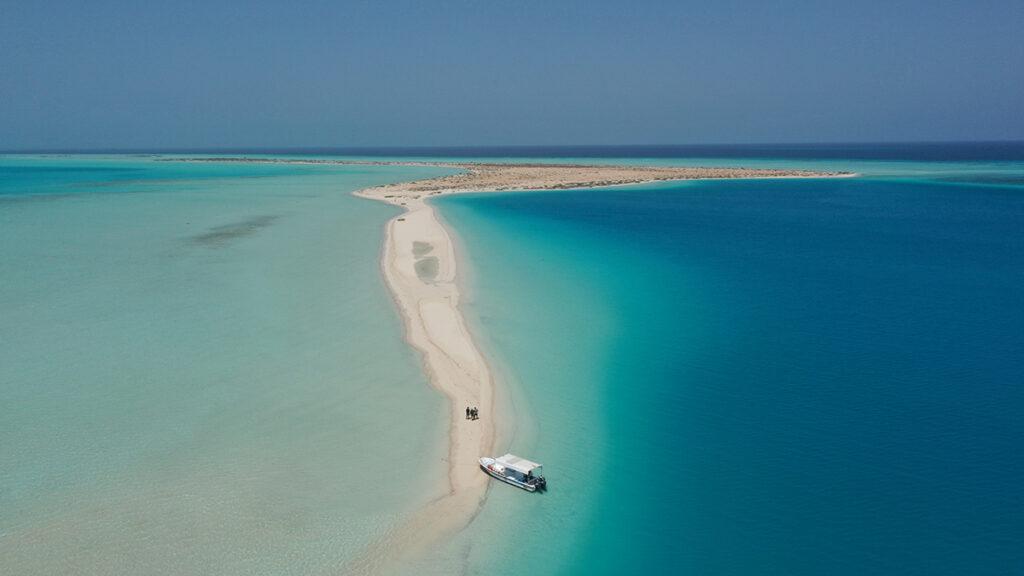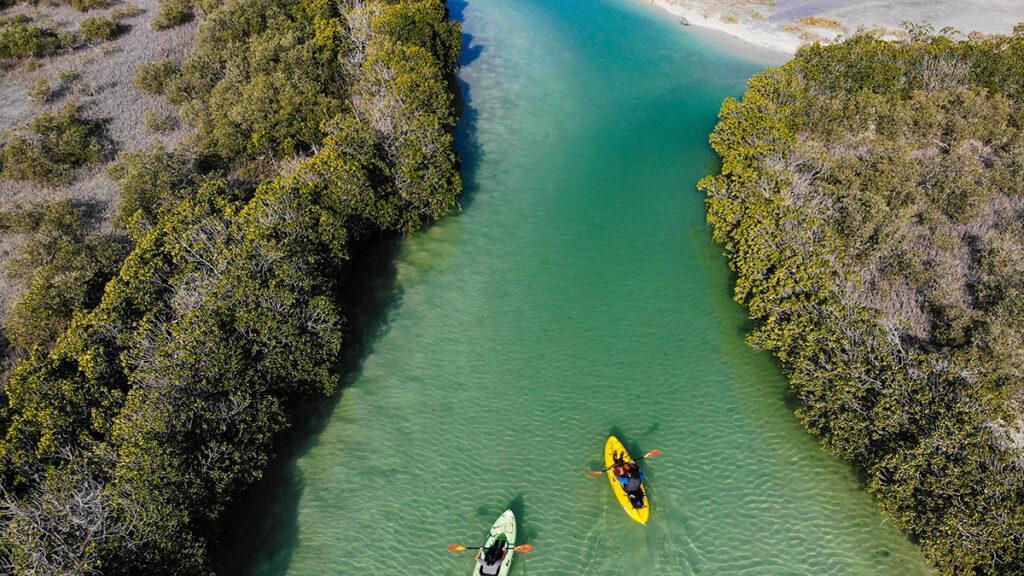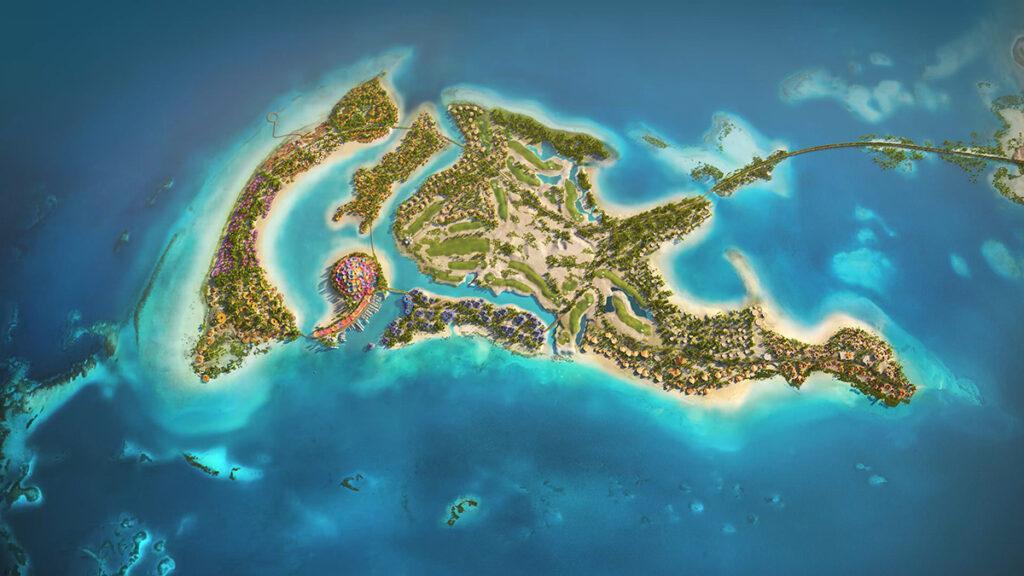Coral Bloom offers luxury in the Red Sea
This project by Foster + Partners for Saudi Arabia is among the most ambitious regenerative tourism developments in the world. Coral Bloom is a paradisiacal destination that is designed to protect and promote the unspoiled nature of Shurayrah Island. Even though there will be eleven hotels, a new lagoon and new beaches.
As an architectural wonder, Coral Bloom is part of the Red Sea Project which is intended to attract affluent tourists to Saudi Arabia’s west coast. Or more specifically, to the 22 islands in the Red Sea which The Red Sea Development Company (TRSDC) wants to transform into a huge paradisiacal destination. One that boasts sustainability amidst the ultimate in luxury. Coral Bloom will make an important contribution here: the concept with eleven hotels designed by Foster + Partners plans to protect and support the nature on Shurayrah Island. The architects’ visionary plan was presented by the TRSDC Chairman, His Royal Highness Mohammed bin Salman, Crown Prince of Saudi Arabia.
Gateway to a sustainable paradise
Shurayrah is the main island featuring in the huge project, and is intended to serve as the gateway to this fantastic location. And so the bar has been set very high for Coral Bloom as far as expectations are concerned. “We expect guests to be awed by what they see when they first arrive at The Red Sea Project. They will enjoy a truly immersive barefoot luxury experience,” says TRSDC CEO John Pagano. Foster + Partners’ design promises to make this vision become a reality. After all, it “took inspiration from the incredible flora and fauna found uniquely in Saudi Arabia”.
The renowned architects are famous for their extravagant sustainable designs. Their portfolio includes the new capital city of the Indian state of Andhra Pradesh and Bloomberg’s new European headquarters, for instance. Sustainable buildings of superior quality are therefore a speciality of the team at Foster + Partners. And so this flourishing venture on Shurayrah Island is likely to pick up many awards.
Nature conservation as a top priority
Biodiversity is at the focus of their plans: disruption of the mangroves and other habitats has to be avoided at all costs. Indeed, Coral Bloom is also intended to provide natural protection against erosion. The plans envisage creating new habitats, using clever landscape design to allow healthier growth of the island’s flora and fauna.
All of this is supposed to be feasible even though there will be eleven new hotels on Shurayrah. The proposal also outlines designs for the new buildings, which are tailored to the expectations of modern travellers: spaciousness, attractive surroundings, and the luxury of experiencing the magnificent nature of the region. What’s more, the plan for Coral Bloom also includes new beaches and a new lagoon. Without harming existing shores, that is. On the contrary, the aim is to protect what is currently available. The new developments are intended to raise the level of the dolphin-shaped island, for example. This will help it better deal with the global threat of rising sea levels.
Luxury on vacation at ground level
Some of the industry’s global players are potential operators of the hotels and villas at Coral Bloom. Built at ground level, the new project on Shurayrah Island will provide a luxurious setting for its classy clientele. The landscape, views and natural experiences convey the feeling that extra special “secrets” are awaiting discovery here.
As the Covid-19 pandemic has boosted demand for exclusive, secluded locations, the Coral Bloom properties are designed without indoor corridors. Maximum energy efficiency and environmental compatibility are two important factors: the resorts will be manufactured offsite using lightweight materials with a low thermal mass. Wood and other sustainable building materials will influence the appearance and character of the new buildings.
As if created by nature
“Our vision for Shurayrah is inspired by the island’s natural state, with the hotels designed to give the impression that they have washed up on the beaches and nestled among the dunes almost like driftwood,” describes Foster + Partner’s Head of Studio Gerard Evenden. The name of the project, Coral Bloom, was chosen to reflect this underlying idea.
Regenerative tourism
The Red Sea Development Company has committed to achieving a 30 percent net conservation benefit by 2040. Consequently, it is building the world’s largest district cooling plant that is powered around the clock by renewable energy. The aim is to facilitate efficient, centralized cooling across the destination.
All areas of the project will be exclusively supplied with wind and solar power. The whole complex will rely on the world’s largest battery storage system, at 1000 megawatt hours (MWh). When the sun sets, or in the case of malfunctions or breakdowns, this will ensure that the lights in this luxury destination still shine brightly.
Green electricity from huge battery
“The size and scale of TRSDC’s battery storage facility puts this iconic regenerative tourism destination at the forefront of the global transition towards carbon neutrality. Wind and solar capacity are set to exceed coal and gas in less than five years, and we are keen to drive the pace of change,” TRSDC CEO John Pagano explains proudly.
The powerful battery storage system is part of a public-private partnership agreement that TRSDC recently awarded to an ACWA Power consortium. This envisages generating up to 650,000 MWh of 100% renewable energy for the Red Sea Project and other systems. Zero CO2 emissions goes without saying, of course. Almost half a million tons of greenhouse gas emissions annually will be saved as a result.
“Clean” innovations
The concession agreement has a duration of 25 years and includes more than just renewable energy and district cooling infrastructure: three seawater reverse osmosis plants will supply clean drinking water as well. An innovative sewage treatment plant is also planned, which will firstly enable environmentally friendly waste management. And is secondly intended to create new wetlands and supplement water for the vegetation.
Its master plan is based on extensive marine spatial planning, and it leaves 75 percent of the project’s islands untouched. Shurayrah is one of just 22 islands to be chosen. Assuming the airport and first four hotels are finished on time, Coral Bloom will open for guests at the end of 2022.
This is the goal set by Crown Prince Mohammed bin Salman, who wants to turn Saudi Arabia into a modern, “green” nation. Bringing the country up to date in other areas is admittedly a completely different matter, however.
Coral Bloom as a pioneering project
In any case, as the resorts for the Red Sea Project are being designed by prominent architects such as Foster + Partners and Kengo Kuma, this luxury development is guaranteed to attract interest around the globe. Environment-friendly innovations can be welcomed even if you won’t visit them yourself, of course. In fact, anything that fights climate change is a good idea. Especially if it inspires others in a similar way. Coral Bloom is pursuing regenerative tourism, which could help other destinations around the world to flourish in years to come.
Text: Elisabeth Schneyder
Translation: Rosemary Bridger-Lippe
Renderings: Foster + Partners, The Red Sea Development Company
